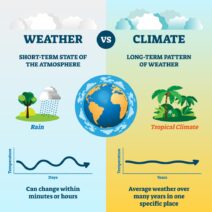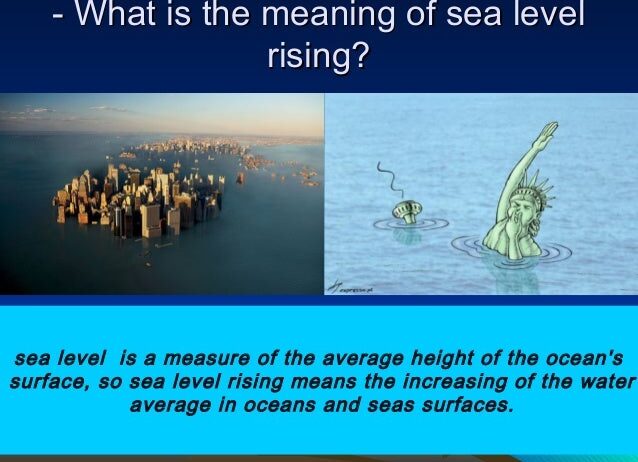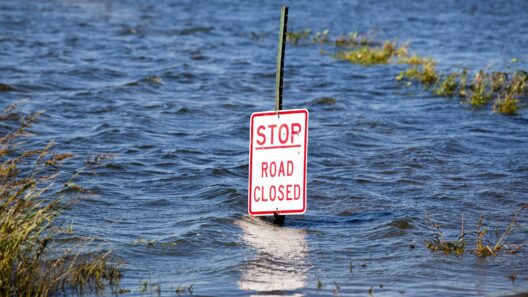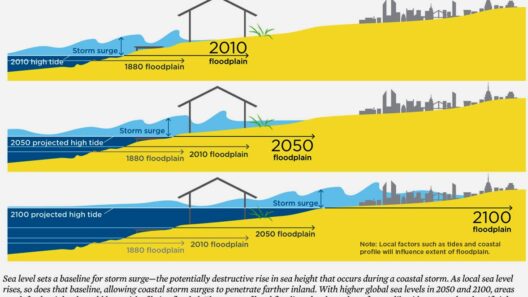In recent decades, the phenomenon of rising sea levels has commanded significant attention across the globe. Debates swirl around the severity and causes of this increase, as well as its implications for coastal regions. Are sea levels rising, or is it merely an exaggeration? The intricacies of oceanography, climate science, and geophysical processes coalesce into an intricate narrative that warrants examination. This piece intends to shed light on the multifaceted dimensions of rising sea levels while addressing the myths that distort public understanding.
Understanding the Underlying Causes of Sea Level Rise
At the forefront of the discussion on rising sea levels are the two primary culprits: thermal expansion and melting ice. As oceanic temperatures escalate due to global warming, the water expands—a phenomenon known as thermal expansion. This increase in temperature and consequent expansion contribute significantly to the observed sea level rise.
In tandem with thermal expansion, the melting of glaciers and polar ice caps accelerates the influx of water into the oceans. For example, the Greenland and Antarctic ice sheets are losing mass at an alarming rate. According to numerous studies, scientists estimate that the contributions of these ice sheets and glaciers can add inches to sea levels every year. It is essential to comprehend these intricate processes to grasp the veracity behind the rising sea levels narrative.
Myth: Sea Levels Are Rising Uniformly
One prevalent myth that permeates public discourse is the belief that sea levels rise uniformly across the globe. In reality, sea level changes vary dramatically from one region to another. Factors such as ocean currents, land subsidence, and regional climates can exacerbate or mitigate rises in specific locales. For instance, some areas along the U.S. East Coast are experiencing significantly higher sea level rise than the global average, driven by a combination of land sinking and ocean currents. This uneven rise is often complex and requires localized studies to accurately assess impacts.
The Role of Tectonic Activity
Scientific discourse also emphasizes the significant impact of tectonic activity on sea levels. Plate tectonics can lead to uplift or subsidence of land masses, thus influencing how sea levels are perceived in specific regions. Areas near tectonic plate boundaries may experience geological changes that counter or amplify rising sea levels. For example, regions like parts of California are uplifted due to tectonic activity, which can counterbalance some effects of rising seas. Therefore, the interplay between geological forces and oceanography must be considered for a comprehensive understanding of sea level dynamics.
Myth: The Effects of Sea Level Rise Are Easily Predictable
Another common misconception is the belief that projections of sea level rise are straightforward and devoid of uncertainty. However, predicting sea level rise involves considerable complexity and variability, as it is contingent upon numerous factors, including greenhouse gas emissions scenarios, technological advancements, and policy implementations. Various models yield different predictions based on the assumptions and methodologies applied. While there is a general consensus that sea levels will rise, the exact ramifications in terms of timeframes, rates, and localized effects remain rife with uncertainty.
Adapting to the Implications of Rising Oceans
The reality of rising sea levels necessitates urgent and strategic adaptation measures, especially for vulnerable coastal communities. As lands shrink and flooding increases, urban planners and policymakers must embrace innovative strategies. This may include constructing seawalls, restoring wetlands, and even retreating from some coastal areas entirely. Moreover, enhancing community resilience through infrastructure improvements and emergency preparedness initiatives is paramount to safeguard lives and resources from impending threats.
Environmental and Social Justice Considerations
In the discourse surrounding sea-level rise, it is crucial to address the social justice implications. Marginalized communities often bear the brunt of the effects due to limited resources for adaptation and resilience. The intersectionality of rising sea levels with socio-economic status raises ethical concerns around displacement, migration, and the equitable distribution of resources. Thus, fostering an inclusive dialogue with affected communities is essential in understanding the socio-environmental challenges posed by rising oceans.
Myth: There’s Nothing We Can Do to Stop It
The despairing notion that humanity is powerless to ameliorate the effects of rising sea levels often permeates societal attitudes. Yet, individual and collective action can make a difference. Emphasizing the reduction of greenhouse gas emissions remains vital in combating climate change and its accompanying effects on sea levels. Every small contribution to sustainable practices can coalesce into significant change. Moreover, advocating for environmental policies that prioritize renewable energy and conservation can catalyze solutions that may mitigate future rises.
In Conclusion: The Narrative of Rising Seas Is Multifaceted
The discourse surrounding rising sea levels is replete with complexity and nuance. By debunking myths and fostering a comprehensive understanding of the multifaceted causes and implications, we can better navigate the uncertainties ahead. Armed with knowledge and a commitment to action, it becomes possible to mitigate the threats and respond effectively to the challenges of our changing planet. The aesthetic beauty of coastal landscapes should remain accessible and resilient for generations to come, necessitating our vigilance and adaptability in the face of rising tides.







